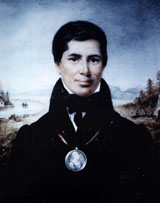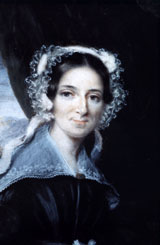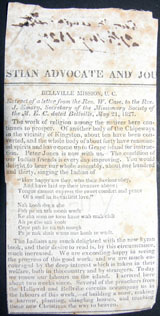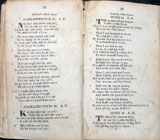Known in Ojibwa as Kahkewaquonaby, meaning “sacred feathers,” Peter Jones (1802-1856) was a Mississauga Ojibwa chief, a member of the eagle totem, a farmer, a Methodist minister, an author and a translator. At school he became known as Peter Jones; by his account, he converted to Methodism in 1823. Jones became the first Canadian native to keep a journal, the first native missionary appointed to serve the Ojibwa, and, with his brother, the first translator of biblical literature and hymns into native languages. In 1831, Jones travelled to England to raise funds for Indian missions and to represent native interests to British authorities. He preached in Methodist churches throughout Britain and was presented to William IV; in 1837 he delivered a petition to Queen Victoria requesting the title to Indian lands. Poor health required him to retire with his wife, Eliza, to Brantford after 1850.
Matilda Jones, a miniaturist and daughter of a prominent Methodist family in Bristol, painted two portraits of Jones while he was in England.
Matilda Jones, a miniaturist and daughter of a prominent Methodist family in Bristol, painted two portraits of Jones while he was in England.
“Kahkewaquonaby or Rev. Peter Jones” and Eliza Field
Two oil portraits by Matilda Jones; the back of the portrait of Peter Jones bears her signature, the date and location (8 Coleman Street-London-April 1832).“Extract of a letter from the Rev. W. Case, to the Rev. J. Emory, Secretary of the Missionary Society of the M.E.C., dated Belleville, May 21, 1827,” printed that year in the Christian Advocate and Journal.
Peter Jones, translator.
Collection of Hymns for the Use of Native Christians of the Chipeway Tongue.








